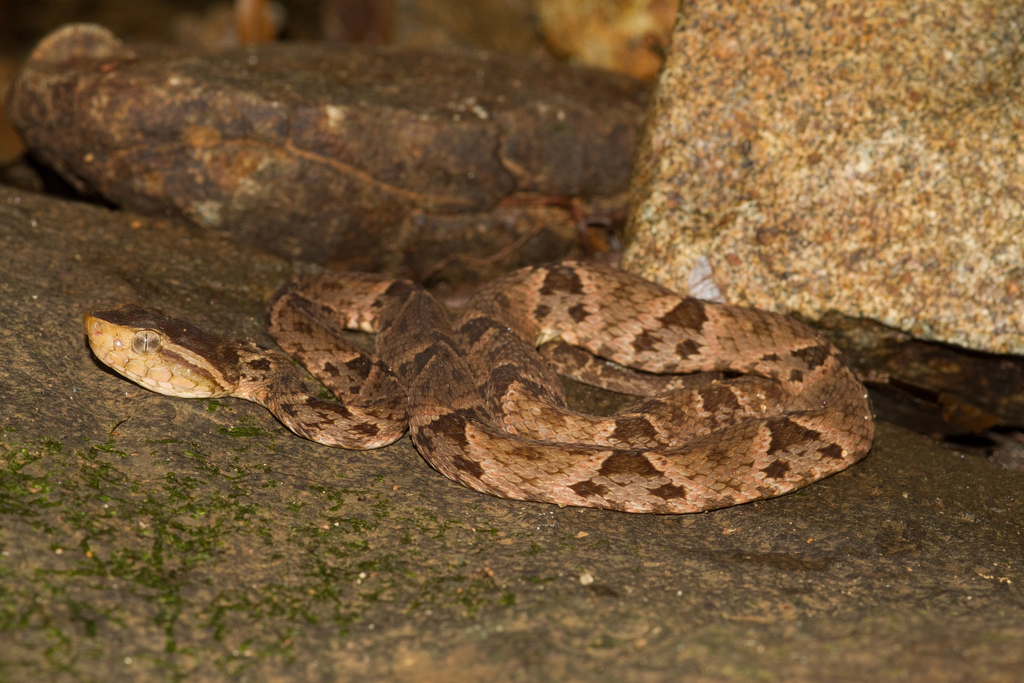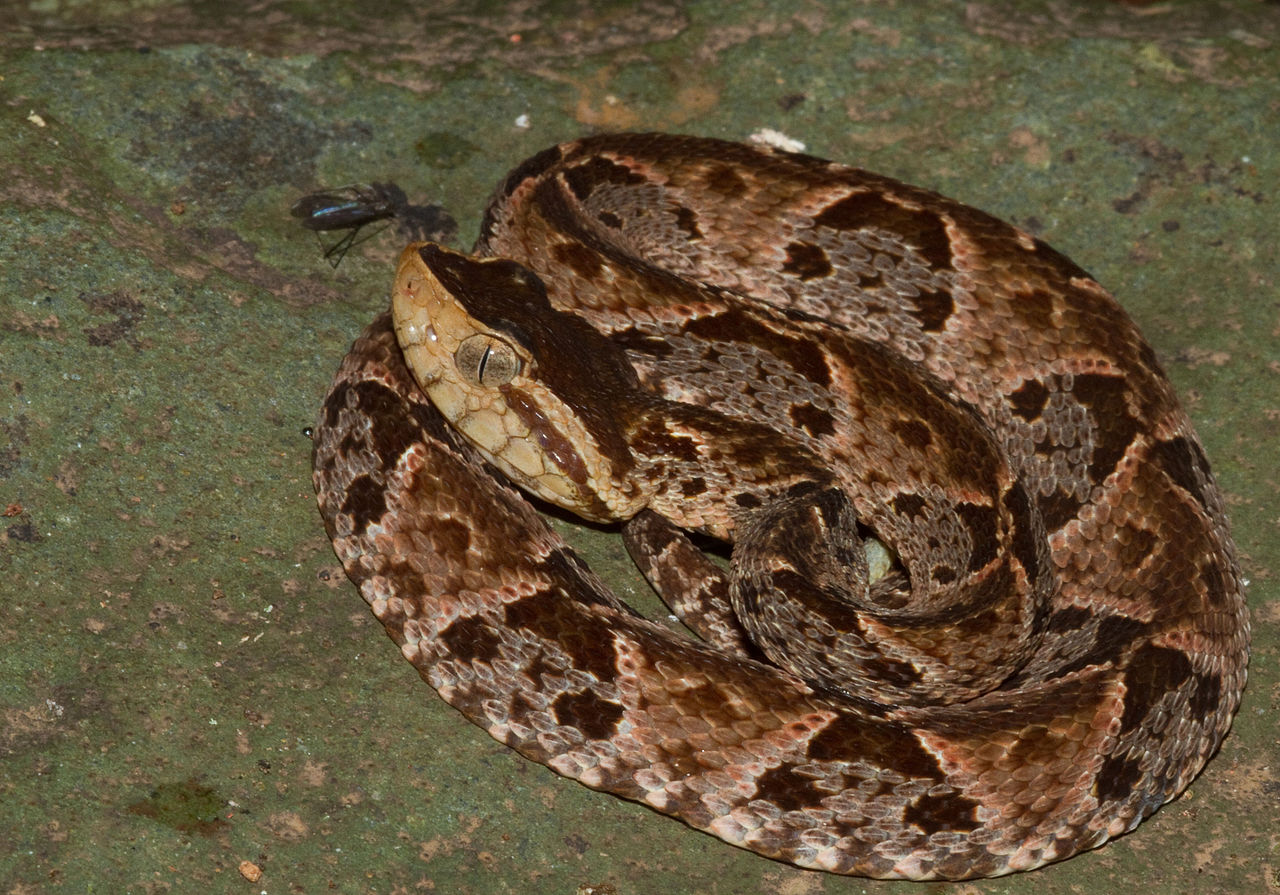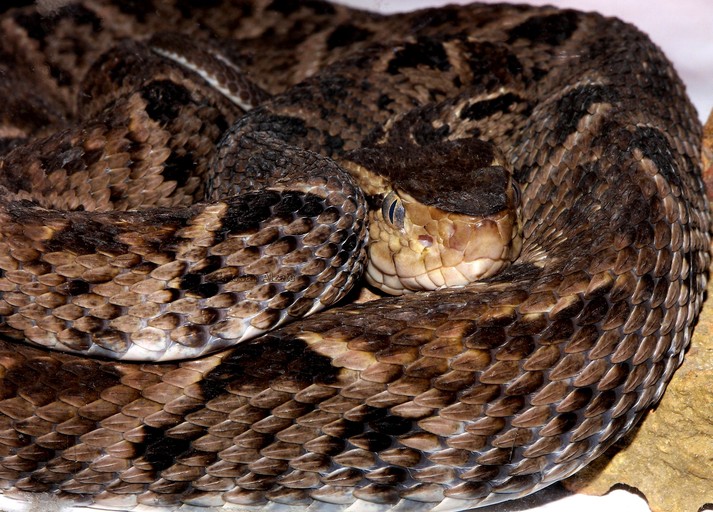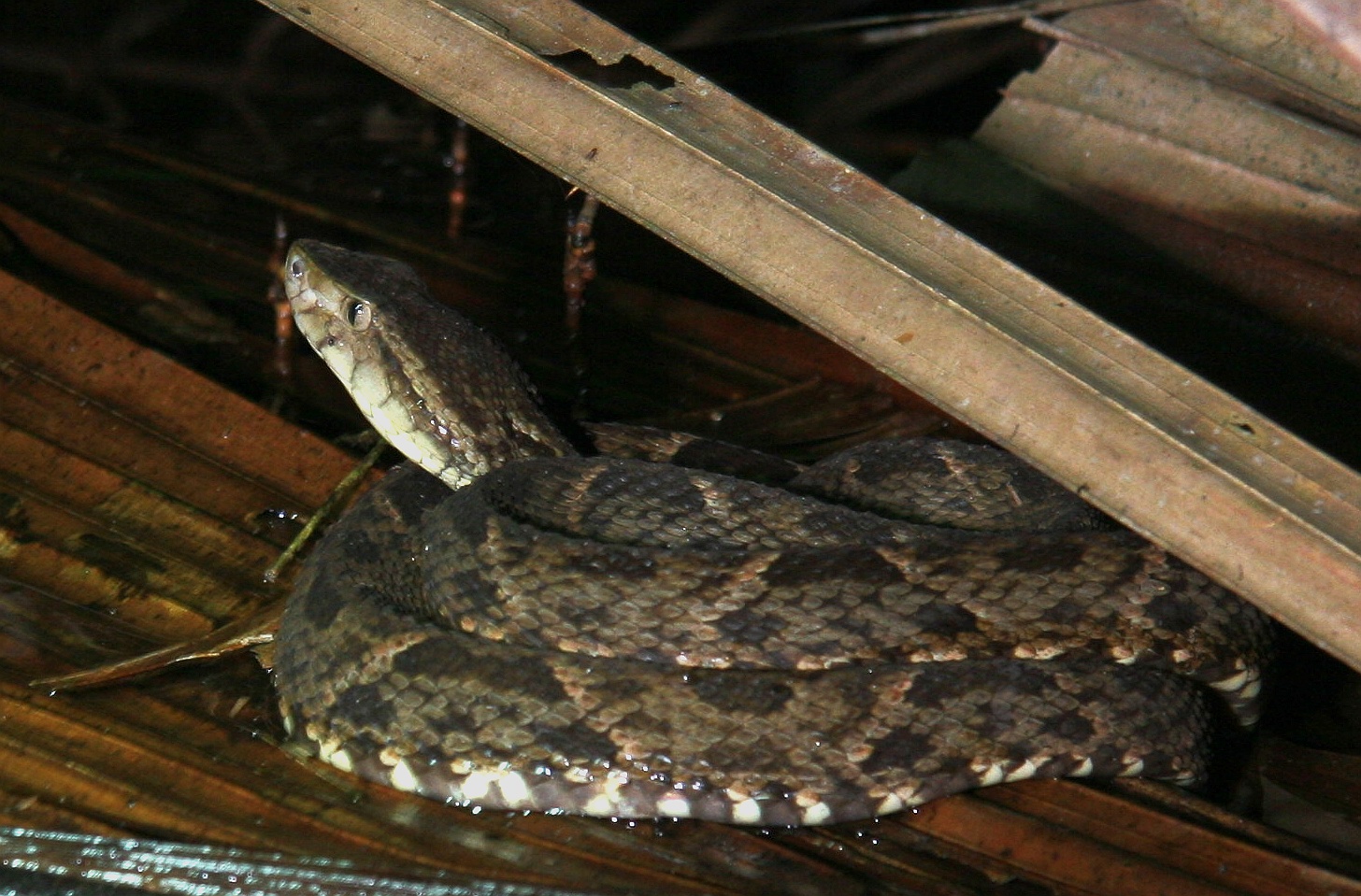Within the snake kingdom, there are some species better known than others. The velvet snake is one of the unknown in Spain, although in other countries such as America they know it quite well, especially due to the cases of deaths that occur every year due to its bite.
Potentially poisonous, we are talking about an aggressive snake that fights when it feels threatened. If you want to know the velvet snake characteristics, their natural habitat, feeding and reproduction, do not hesitate to read this article.
Velvet Snake Characteristics

The velvet snake, scientifically named Bothrops asper It is a poisonous reptile, large and quite restless and nervous. For this reason, it is said that it is aggressive when it is in danger. It is also known as yellow beard, four noses, X, guayacan...
Both the male and the female are born the same size, but as adults the females are larger than the males. Its average size is around 140-180 centimeters (females about five centimeters more, or even reach 250 cm). Regarding their weight, females can weigh up to 6 kilos because their body, in addition to being larger, is also thicker.
The velvet snake's body is composed of diagonal stripes and diamonds., in brown tones. For its part, the head, which is quite large and triangular in shape, is pale yellow. It has fangs that can reach 2,5 centimeters in length. In addition, it also has a loreal pit; it is located between the eye and the snout and is a tool they use to detect their prey. It is also characteristic of the species to have two darker spots on both sides of its head.
As for life expectancy, it is one of the longest since it can be between 20 and 30 years among us.
Velvet snake behavior
The velvet snake is a nocturnal animal, spending the day hidden, especially in bushes or similar areas. Despite the fact that it is considered one of the most aggressive, the truth is that, as long as it is not bothered or a gesture is made that could put it in a defensive state, it does not usually attack.
However, that does not mean that it is not "brava", that is, it is one of those that seeks a fight and does not avoid confrontations, either with its prey or with other animals, especially if they invade its territory.
your poison
One of the reasons the velvet snake is so dangerous is because of its venom. In fact, in Latin American countries, for example in Costa Rica, 46% of snakebites that occur are due to this species and, of these, 30% have to be hospitalized due to this venom. Or in Venezuela, where 78% of poisonings are due to velvet poison.
Being a quite aggressive snake, it does not care about the size of the human being, and it faces him Coming to apply its poison up to 1,8 meters away.
In case of being bitten by a velvet snake, the first thing to do is to make a tourniquet and go quickly to a hospital where they can treat you. It is important that you do not try to suck the poison in or get upset, as this can increase your heart rate and blood circulation, which will act faster in the bloodstream and may cause more problems.
Habitat
This snake is mostly found in Central and South America mainly. For example, in Costa Rica, there are 140 different species of it, although only 23 of them are poisonous.
The velvet snake's natural habitat is quite varied, as they are able to adapt to multiple environments. However, his favorites are those that have tropical forests and medium humidity. They like to feel fresh in these environments, although that does not mean that they cannot be found in other areas, such as places near rivers, streams, lakes or similar, as well as in pine forests or shrubs. Even in cultivated fields or grassland areas.
The normal thing is that this reptile stays on the ground (although the young specimens often climb the trees. They hide in bushes, which makes them more dangerous because they cannot be seen and can surprise the unwary.
What does the velvet snake eat?

The velvet snake is not a gourmet animal. The truth is that it does not disgust any prey and is capable of eat mammals, rodents, amphibians or even other types of snakes. When they are young, their hunting habits are limited to some insects, but as they get more practice, other prey can pass through their mouths.
Their way of hunting is very lethal, since they use their poison to "kill" the victim so they can eat it. Unlike other snakes, this one does not kill by constriction, that is, by squeezing the victim until it dies, but, being so prolific in biting, it uses it whenever it can.
How the velvet snake reproduces

Unlike other snakes, the velvet snake is a reptile capable of reproducing at any time of the year. It does so through already formed young (it is viviparous), very different from the way that others give life (which they do by eggs). Besides, they have young only every 2-3 years, not annually like other species.
Once the specimens are ripe for reproduction, when the reproductive cycle occurs, the male stops eating to prepare for mating, which takes place in different areas. Carried out, the female and the male lead a normal life. However, after a while, the female will stop eating to focus on her "pregnancy". In fact, this can last up to 6 months, at which time gives birth to up to 30 pups (There are sporadic cases in which they have had 100 pups, but this is not usual).
As children, snakes use their own tails (specifically the tip) to attract their prey before pounced on them.
